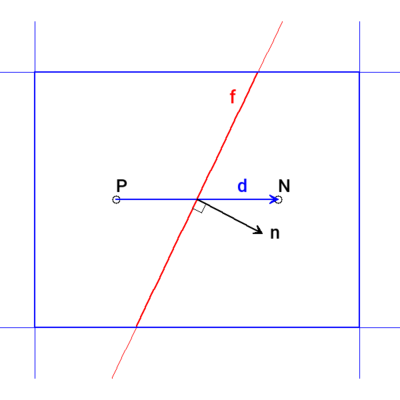The full gradient of a property \(Q\) at a face can can be interpolated from the cell-based gradient. The surface-normal contribution is then represented by:
\[\snGrad Q = \vec{n} \dprod \left( \grad Q \right)_f\]where \(\vec{n}\) is the face unit normal. The stencil
for the gradient calculation at the face, \(f\), between
cells P and N is described by the following figure:
 where the vector \(\vec{d}\) joins the two cell centres.
A variety of schemes are available that differ in their
application based on the angle, \(\theta\), between the \(\vec{d}\)
and \(\vec{n}\) vectors, representing the degree of
non-orthogonality.
where the vector \(\vec{d}\) joins the two cell centres.
A variety of schemes are available that differ in their
application based on the angle, \(\theta\), between the \(\vec{d}\)
and \(\vec{n}\) vectors, representing the degree of
non-orthogonality.
Usage🔗
Surface-normal gradient schemes are specified in the
fvSchemesfile under the snGradSchemes
sub-dictionary using the syntax:
snGradSchemes
{
default none;
snGrad(Q) <snGrad scheme>;
}
Options🔗
- Corrected surface-normal gradient scheme
- Face-corrected surface-normal gradient scheme
- Limited surface-normal gradient scheme
- Orthogonal surface-normal gradient scheme
- Uncorrected surface-normal gradient scheme
Example🔗
Further information🔗
Source code:
API:
